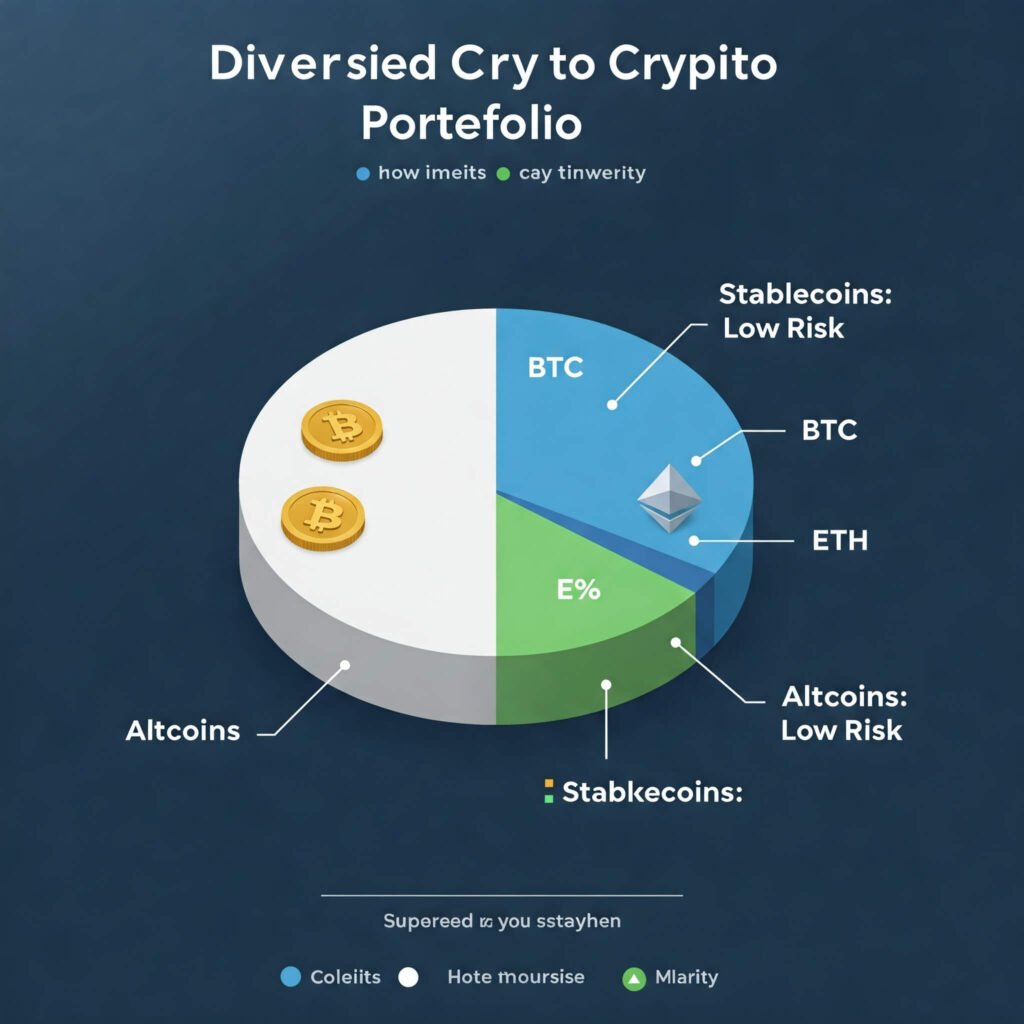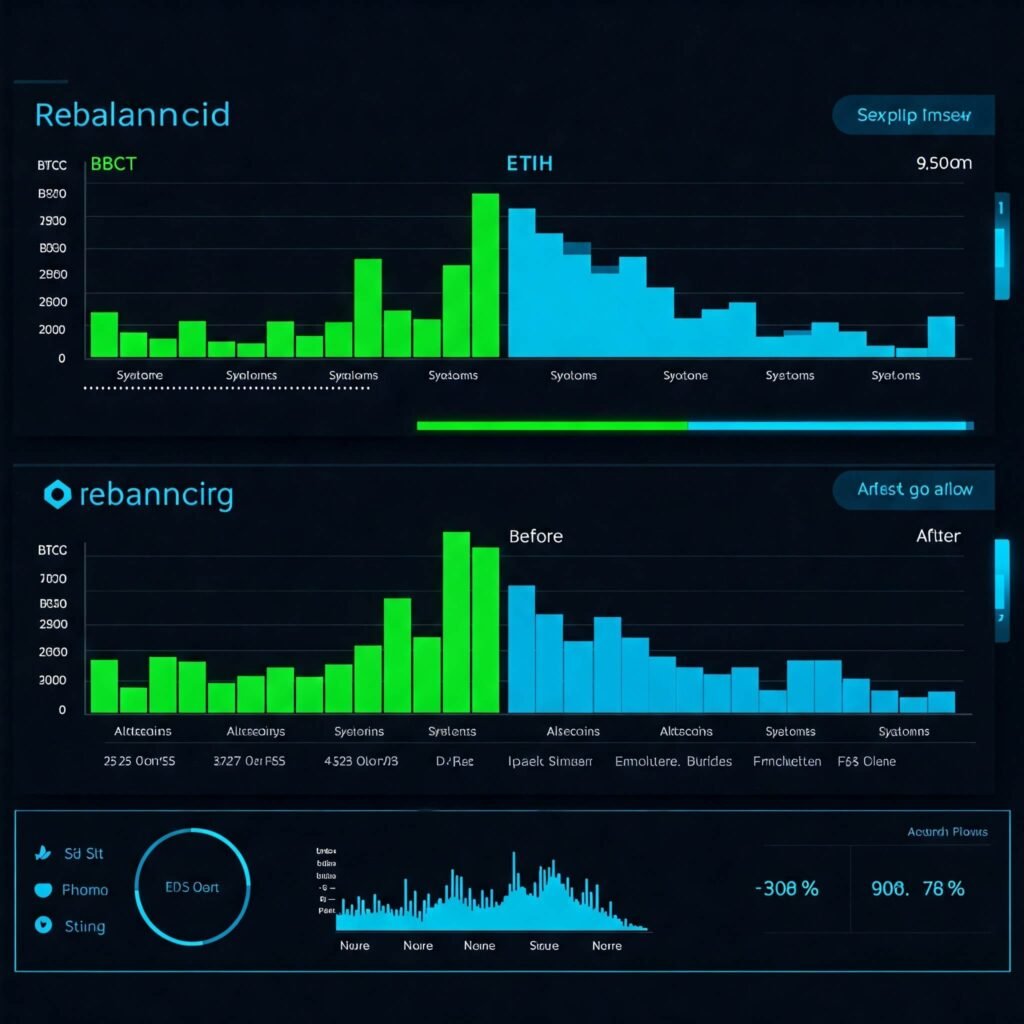Introduction: Why Diversify Your Crypto Portfolio?
Cryptocurrency markets are thrilling but volatile. To diversify your crypto portfolio means spreading your investments across different assets to reduce risk and increase potential returns. Without diversification, a single market crash could wipe out your gains. This blog explores smart, actionable strategies to build a balanced crypto portfolio, backed by real-world examples and expert insights.

Why Crypto Portfolio Diversification Matters
Diversifying your crypto portfolio protects you from the market’s wild swings. In 2022, Bitcoin dropped over 60% from its peak, while some altcoins fared better. A diversified portfolio could have softened the blow. Here’s why it’s crucial:
- Reduces Risk: Spreading investments minimizes the impact of a single asset’s failure.
- Maximizes Returns: Different cryptos perform well at different times, balancing losses with gains.
- Adapts to Trends: A varied portfolio lets you capitalize on emerging sectors like DeFi or NFTs.
Outbound Reference: CoinMarketCap’s guide on crypto volatility explains how diversification mitigates market swings.
Smart Strategies to Diversify Your Crypto Portfolio
1. Allocate Across Different Asset Types
Not all cryptocurrencies are the same. Mix established coins, altcoins, and stablecoins for balance. Here’s a suggested allocation for a $10,000 portfolio:
- Bitcoin (BTC): 40% ($4,000) – The gold standard of crypto, stable and widely accepted.
- Ethereum (ETH): 30% ($3,000) – A leader in smart contracts and DeFi.
- Stablecoins (USDT, USDC): 15% ($1,500) – Low-risk assets pegged to fiat for stability.
- Altcoins (e.g., ADA, SOL): 15% ($1,500) – High-growth potential but riskier.
Real-World Example: In 2021, investors who diversified into Solana (SOL) alongside Bitcoin saw massive gains when SOL surged over 10,000%.

2. Explore Different Sectors in Crypto
Crypto isn’t just about coins. Diversify across sectors to capture varied opportunities:
- DeFi (Decentralized Finance): Projects like Aave or Uniswap offer lending and trading solutions.
- NFTs (Non-Fungible Tokens): Invest in platforms like OpenSea or tokens tied to digital art.
- Layer-2 Solutions: Polygon (MATIC) or Arbitrum enhance blockchain scalability.
- Metaverse: Tokens like MANA or SAND power virtual worlds.
Actionable Tip: Research each sector on platforms like Messari to understand their growth potential.
3. Use Dollar-Cost Averaging (DCA)
Crypto markets are unpredictable. Dollar-cost averaging helps you diversify your crypto portfolio over time by investing fixed amounts regularly. For example, invest $500 monthly across BTC, ETH, and SOL instead of $6,000 at once. This reduces the risk of buying at a market peak.
Data Insight: A 2020 study by Kraken found DCA outperformed lump-sum investing in crypto by 15% on average.
4. Rebalance Your Portfolio Regularly
Markets shift, and so should your portfolio. Rebalancing ensures your allocations stay aligned with your goals. For instance, if Bitcoin’s value grows to 60% of your portfolio, sell some BTC to reinvest in underperforming assets like altcoins.
How to Rebalance:
- Review your portfolio quarterly.
- Compare current allocations to your target (e.g., 40% BTC, 30% ETH).
- Buy or sell to restore balance.

Common Mistakes to Avoid When Diversifying
- Over-Diversification: Holding too many coins (e.g., 50+) makes it hard to track performance. Aim for 5–15 quality assets.
- Ignoring Fees: Trading fees on exchanges like Binance can eat into profits. Use low-fee platforms like Coinbase.
- Chasing Hype: Avoid “meme coins” like Dogecoin unless you understand their risks.
- Neglecting Security: Store assets in hardware wallets like Ledger for safety.
Outbound Reference: Ledger’s guide on crypto security offers tips to protect your investments.
Tools to Help Diversify Your Crypto Portfolio
- Portfolio Trackers: Use apps like CoinGecko or Blockfolio to monitor allocations.
- Exchanges: Platforms like Binance offer diverse coins for easy diversification.
- Research Platforms: Stay informed with CoinDesk for market trends.
Conclusion: Start Diversifying Today
To diversify your crypto portfolio is to invest smarter, not harder. By spreading your investments across asset types, sectors, and time, you can reduce risk and seize opportunities in the dynamic crypto market. Start small, research thoroughly, and rebalance regularly to build a portfolio that thrives.
Call to Action: Review your crypto holdings today. Allocate 10–20% to a new sector like DeFi or stablecoins, and track your progress with a portfolio app. Happy investing!
Outbound Link: Diversifying a Crypto Portfolio – Archax




